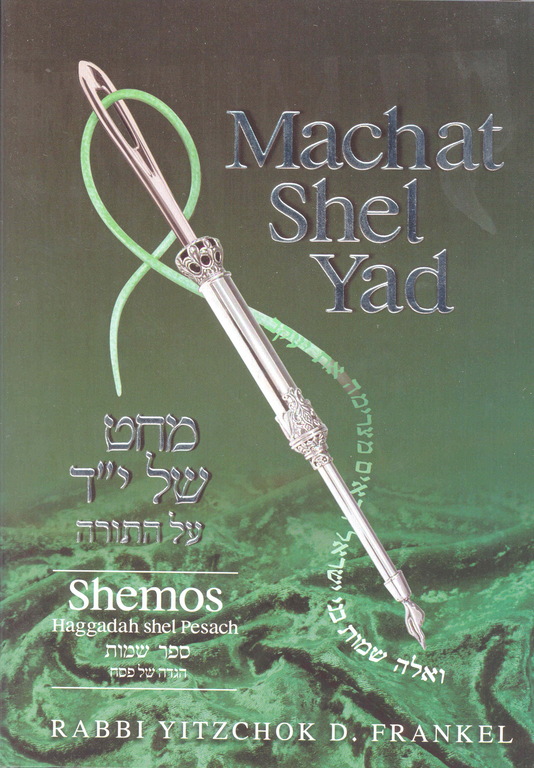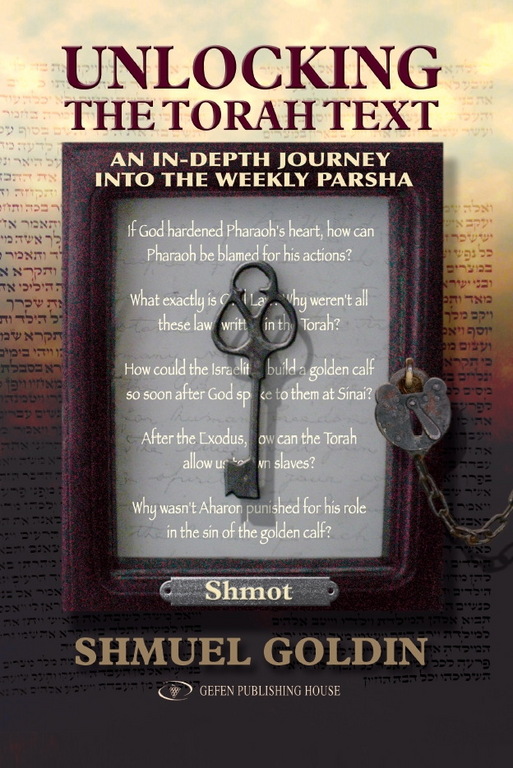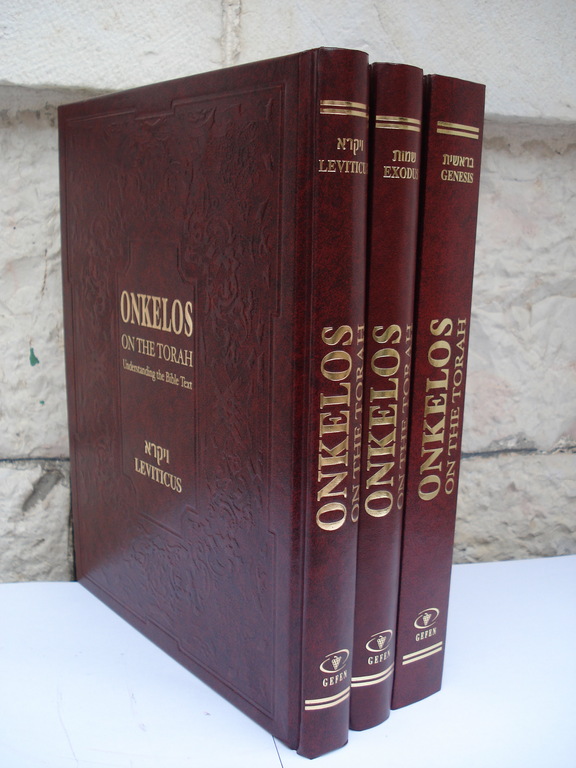The Kosher Bookworm: Sefer Shemot
What’s in a name? Plenty
Issue of Jan. 23, 2009 / 27 Teves 5769
This year it is our good fortune to witness the publication of several high quality new translations of either the texts or commentaries of the second book of the Bible, Shemot — Exodus.
Rabbi Berel Wein, in his introduction to a recent translation of the Kli Yakar by his friend, Elihu Levine, said in regard to the art of translation: “To be truly faithful to the original, the translator has to be able to capture the thought process and true intent of the author. If this is true regarding translations of the usual run of books and journalism, how much more so is this skill necessary when translating works of the Torah. In Torah every nuance and aside counts, and if the translator does not become a piece of the author himself, so to speak, the translation ultimately fails.”
Aside from the work he was addressing, the beautiful translation of the Kli Yakar commentary of the book of Shemot (Targum Press, 2002), Wein’s comments are applicable to the other works discussed here. Each measures up to the standard he set.
Perhaps the oldest translation of the Chumash extant today is Targum Onkelos, an Aramaic translation, and commentary of the first five books of the Bible by one of the most remarkable converts to our faith, Onkelos. His translation provided for the Jews of his time whose lingua franca was Aramaic, a clear explanation of the text as well as a built in commentary within the context of 2,385 Targumic deviations from the original Hebrew text, thus the commentary.
“Onkelos On The Torah: Understanding the Bible Text” (Gefen), is unique in the fascinating organization of its page texts.
There is the basic Hebrew Torah text, side by side with the Aramaic text. The English translation is that of the Aramaic, not that of the Torah text. This is the first novelty. In this translation, variances between the original Hebrew and the Aramaic are set in bold type. Beneath “the line,” these bold type words are given a full court press treatment wherein the English translators, Rabbi Dr. Israel Drazin and Rabbi Stanley Wagner skillfully delineate the whys and wherefores of the deviations in word meaning, addition, or deletion that is Onkelos’s specialty.
In addition, the authors provided an extensive introduction that serves to give both the scholar and novice a rationale of Onkelos’s method. Among these are how he changed the uses of metaphors, basic grammar, clarity, and even changes in the names of geographic locations, from that of the Biblical era to his time. Most of these changes may be new to many readers, but after reading this work, your appreciation for Targum will take on a new cast. This work also includes a complete appendix, a “beyond the text” supra-commentary, and a translation of the Haphtarot based upon the various Aramaic Targumim, a first for this commentary.
This work has come out, to date, in three volumes, consisting of the first three books of the Chumash. Hopefully, this series will soon be complete in all five volumes and find its rightful place in our community shuls.
The next work consists only of the book of Shemot in English translation of the famed “Miqra’ot Gedolot, The Commentators’ Bible,” edited, translated and annotated by Dr. Michael Carasik, (The Jewish Publications Society, 2005.) This is the first time that such a work has been attempted in English, and the JPS deserves to be complimented for producing it.
Within this sefer can be found a translation of Rashi, Rashbam, Ibn Ezra, Ramban, and the added commentators, the Bechor Shor, Kimhi, Hizkuni, Ralbag, Abarbanel, and the Sforno, some in English, for the first time, ever.
The layout of this Chumash is totally different from those in the past.
The Hebrew text is in the middle of the page, with the NJPS, a freer and more readable translation found to its upper left and the OJPS — a more literal translation — to its upper right. The various commentators are in the middle and lower right and left of the page, similar to the tzurat ha’daf (layout) of the Talmud. Additional comments and footnote are found at the bottom. Numerous literary aspects, definitions of terms and biographical data are provided within the context of the introductory material. The total effect is an attractive, well-organized work that is easy to read, and will serve as a valuable learning tool for home, school, and shul. My one reservation deals with the need for the use of both JPS translations. One is sufficient. Hopefully, this will be reconsidered in the printing of future editions.
Next is a commentary on Shemot based upon the teachings of the classical commentaries, Chazal, and original thoughts by its author and editor, Rabbi Yitzchok D. Frankel, rav of the Agudath Israel of the Five Towns in Cedarhurst. Titled “Machat Shel Yad,” (Nehorah Publication / Urim, 2008), Rabbi Frankel utilizes the classic tools of p’shat, drush, hashkafa and philosophy to give a quality perush that will serve our people well for years to come.
A special feature that is included in this work is a section geared to the Pesach Hagadah. Hopefully, this will serve as a model for future works on Sefer Shemot that will take note of the practical role of this sefer for use at the Seder table.
Rabbi Frankel comes to this work with a life’s experience in rabbinics and education, as a prominent student of his mentor, Rav Moshe Feinstein, zt”l, from whom he received his semicha. This commentary on Shemot follows his previous, well-received commentary on Bereishit. Another recent work by Rabbi Frankel is the Kuntras Kol Dodi (2008), a compendium of 280 pages of practical halachic response and expositions of Rav Dovid Feinstein that he heard orally, transcribed and edited with footnotes and explanations. This too, has been well received, especially by many rabbis.
The last book on Shemot we’ll review is “Unlocking The Torah Text: An In-Depth Journey Into The Weekly Parsha” (Gefen, 2008) by Rabbi Shmuel Goldin of Cong. Ahavath Torah in Englewood, NJ, who is also a professor of Bible studies and Jewish philosophy at Yeshiva University.
The organization of this sefer is different from any other on the Chumash in that it brings the reader into the topics discussed in an almost-virtual classroom setting.
Each parsha is divided into four or five learning sections. These, in turn, are sub-divided into portions titled context, which leads into a pivotal question on that context. This is followed by several approaches, similar to speak outs, offering numerous likely answers to the question presented. At the end of each section is a series of points to ponder which place the whole “inyan” (topic) into a proper thematic perspective.
This may sound a bit complicated; however, in reality, it is meant to serve as a challenge to the reader, a challenge well worth taking. Rabbi Goldin is both a skillful teacher and writer. When you read his work, remember that it is based upon oral presentation. Read in that context, the book will serve as a valued resource in better understanding all the events of the Exodus, Matan Torah (Giving of the Torah) and the Mishkan’s construction, as well as the incident of the Golden Calf. Of particular note is the 23-page section of sources with its valuable biographies.
Each of these works deal with the Sefer Yetzi’at Mitzrayim and should serve a practical use at Pesach time. Each deserves a place at the Seder table to supplement the Hagadah. Therefore, a word of caution: Keep these Chumashim and seforim away from the challah and cholent.
Go and enjoy some quality learning time this coming Shabbat and may these commentaries help enrich each and every Shabbat that you will celebrate with family and friends.

 80.0°,
Partly Cloudy
80.0°,
Partly Cloudy 











